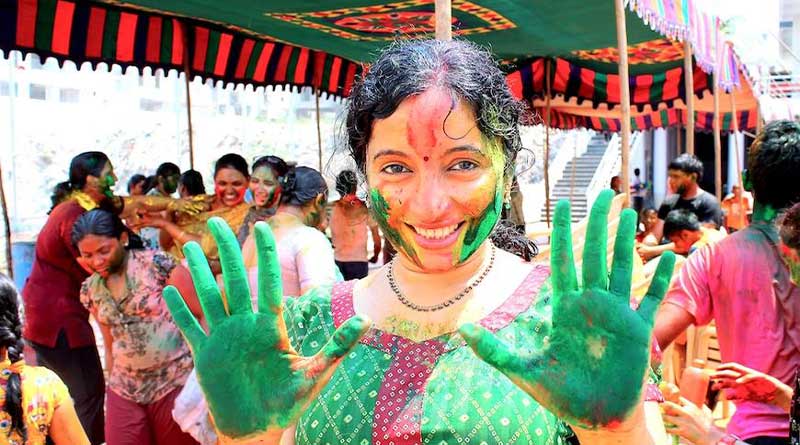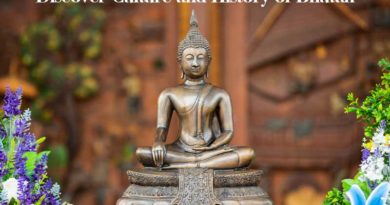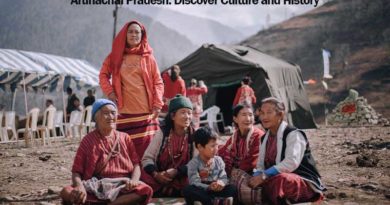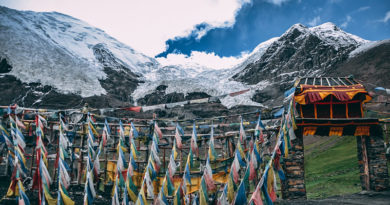Kumaoni Holi: When, Why & How Is It Celebrated ?
The festival of Holi has always been a symbol of India’s heritage with its customs and traditions on this spring festival. The occasion is celebrated using colors, flowers, and lots of gatherings to play with friends and relatives.
Holi celebrations on the plains are centered on its literal theme of colors and are important enough to be a national holiday.
The festivities stretch across north and central India, and in the mountainous regions of the country, Holi is more commonly referred to as “The Festival of People” than “The Festival of Colors”. Yet, colors are present and are the unifying aspect of this festival.
Uttarakhand in particular, has a specific celebration known as Kumaon Holi. Even if the traditions surrounding the Holi celebration have evolved recently, this regional celebration of the festival still captures the essence of Uttarakhand’s colorful and diverse local culture.
When Is Kumaoni Holi Celebrated?
During Kumaoni Holi, the hilly regions of Nainital are completely covered in the colors of the spring season. Nature is at its blossoming best, and flamboyant red blooms of the Rhododendron ‘Buransh’ flowers cover the mountain summits.
At the foot of the summit in fields across villages, swathes of yellow mustard ‘Sarson’ (mustard) flowers blanket the plains and provide a scenic view. This makes the region a popular tourist attraction during these months.
Around the dwellings in the area, fruit trees like “Aadu,” “Khubani,” “Dadim,” and “Padam” spring to life with flowering blooms that add distinct streaks of pink and white. Kumaon is also home to the “Pyoli” and “Kilmad” flowers that glow a vibrant yellow and stretch across the hilly landscape.
Apart from the colors, people enjoy hosting gatherings where folk music, dance, and prayer sessions are conducted to celebrate together. These hymns are based on classical ragas, which give the regional occasion of Holi a free-spirited touch.
Although the region’s celebrations are referred to as ‘Kumaoni Holi’ as a whole, there are actually two kinds of festivities that go around the same time.
● Kumaoni Holi
This is a distinctive and lively event that occurs on the full moon day in the month of Phalguna, which would be February or March. Kumaoni Holi is celebrated a night before the Holika bonfire. People join to sing for ‘Baithi Holi’ on the 1st Sunday of the month of Paush.
Following “Basant Panchami,” which ushers in spring, these musical festivals are conducted to celebrate the start of spring. The custom of “Baithi Holi” is generally thought to have started 2 centuries ago.
People gather in Almora to sing songs and take part in this distinctive style of Holi celebrations on the 1st Sunday of Paush (December/January in the Gregorian calendar) till the day of full moon in Phagun (February/March).
● Khadi Holi
Rural areas celebrate Khadi Holi, which is an occasion native to the rural villages of the area. People play a significant role in these celebrations.
The ceremony of wrapping a piece of fabric around the branch of the Padam tree and covering it with beautiful vibrant colors, is followed by music and songs known as “Khadi Holi,” which last until the day after the full moon. You can see the joy in everyone’s eyes.
There is a custom of Holi songs and celebrations led solely by women in various regions of Kumaon during this time. These songs combine the “Baithi Holi” and “Khadi Holi” musical genres and are mainly hymns that welcome the month of spring.
Women from all over the area unite to utilize instruments like dholaks and manjiras and sing in groups. This custom usually starts the day before Holi, on Ekadashi, when ladies start to celebrate Holi.
Why Is Kumaoni Holi Celebrated?
Mahila Holi, Khari Holi, and Baithki Holii are three distinct ways to celebrate Kumaoni Holi’s musical pleasure. This cultural celebration marks the triumph of goodness over evilness along with the end of winter and the start of the season of sowing, a crucial time for the agricultural communities in these areas.
Basant Panchami marks the beginning of this special fusion of Kumaon regional traditions with Northern Indian cultural traditions. This annual Holi celebration lasts nearly two months in Kumaon. Apart from Holi celebrations in other regions of our country, Kumaoni Holi features distinctive ways of celebrating.
Another characteristic of Kumaoni Holi is its focus on social harmony and intercommunal ties. The celebration, which is observed by people from many cultures and backgrounds as a sign of fraternity and solidarity, brings people together from all walks of life.
The Holi celebrations in this location clearly show Nainital’s particular influences. The Holi festival, which originated in the Braj-Avadh region of Uttar Pradesh, gradually expanded to the hilly areas of Uttarakhand and absorbed regional flavors and influences, giving it a distinctive form.
Folklore and culture have gradually merged into the festival’s atmosphere. Today, Kumaon’s distinctive version of Holi, which is rich in regional intricacies, is a significant cultural legacy.
All the residents in the countryside participate in Holi, no matter what their gender or age is.
The air is filled with the melody of the songs as the sounds of the “dhols” and “jhanjhari” echo throughout it. The entire environment is made to appear divine as they believe that the Gods themselves had come to join in the singing and celebration with the ‘holyaars’.
Holi festivals have historically symbolized the joining together of many communities, as well as oneness and brotherhood.
How is Kumaoni Holi Celebrated?
Kumaoni Holi celebrations usually last about a week, and some houses even dissect their celebrations into five particular schedules to fulfill all customs. Among festivities, men and women have distinct ways of celebrating the occasion.
When together, they usually indulge in pahadi music and dance, the celebrations going on all night. These are inspired by Indian myths and heritage in their choreography. During the day, people visit their neighbors and offer gifts, sweets, and colors.
At the celebrations of Khari Holi and Baithki Holi, songs on classical ragas with themes like spirituality, fun, and melody are sung, whereas Mahila Holi is a lavish celebration performed only by women. The following are some traits of the several Kumaoni Holi variations:
● Baithak Holi
It literally means Holi is celebrated by singing while sitting with a small group of friends and relatives. The title “Holi of Salvation” is frequently used to describe this musical bliss.
Kumaoni folk and Hindustani classical melodies are uniquely combined in the Baithki Holi songs. Instruments like the tabla and harmonium are frequently used to accompany these songs. These traditional songs, which are spiritual and tell stories from Lord Krishna’s life, are sung in local homes as well as community centers.
The fact that local Muslims and Christians enjoy these musical gatherings just as much as people of the Hindu faith is another strange but wholesome thing about these celebrations.
The Kumaoni people are highly careful about timing, and they strictly follow the timings of the folk songs, which revolve around classic ragas. To illustrate, ragas like Kalyan and Yaman are performed in the evenings, whereas ragas like Sarang are sung around noon.
● Khari Holi
This type of Holi, whose name literally translates to “Standing Holi,” typically starts at the same time as Baithki Holi or even a little later. Unlike the sluggish and robust Baithki Holi, this holiday is really exciting and joyful.
People from Kumaon sing traditional songs while dressed in the region’s traditional garb, which includes a white nokdar cap, churidar pajama, and kurta (traditional attires).
You may see the people of Kumaon visiting their relatives while dancing and singing their music, which features ethnic instruments. The air is filled with colorful music.
The majority of the celebrants are males, and the groupings of guys, or “tolis,” maintain the mood upbeat and vibrant.
● Mahila Holi
This version is quite similar to the Baithki version, with the exception that all of the gatherings here are made up of Kumaoni women. The native ladies of the area sing songs that are about romantic relationships and spiritual connections. “Balma ghar ayo phaagun mein” is an illustration of a Mahila Holi song that is frequently sung.
Rituals of Kumaoni Holi:
Every festival has its own customs and traditions, and Kumaoni Holi also has some practices that make it the unique celebration it is. If you were to ever visit the region during this time, you might be able to witness some of the following rituals carried by the people.
- Cheer Dahan and Cheer Bandahan: In Kumaon, fifteen days before Dhulandi, one can see how the miraculous Holika bonfire is made. Holika is a demon woman from an Indian folktale, who planned to murder an infant by stepping into a bonfire with him, but instead, burns herself.
Cheer Bandhan, or Cheer Dahan, is the custom of grouping together to yell praises for the coming of spring and gratitude towards the lord. The Hindi word ‘Cheer’ translates to ‘scream’ while ‘Bandhan’ means ‘bond’, which is in reference to the practice.
Since this Cheer serves as the focal point of all ceremonial activities, the populace takes good care to protect it. Cheer Bandhan is the name given to this custom, whereas Cheer Dahan is the name given to the bonfire that is burned the night before Holi.
As Kumaon Holi celebrates Hindu gods, the custom represents Prahlad’s victory over her cruel father – another instance from an Indian myth.
- Chharodi: Charradi is a tradition where people play with natural colors prepared from the extract of flowers. Across all of India, it is observed with great fervor. Gulal and Abeer are the main components of the colors made.
Children may be seen spraying everyone with colored water from their Pichkaris (water guns) and throwing water balloons.
- Shubh Kamna: Together, the Kumaoni people celebrate this cheerful occasion and pray for wealth while hurling gulaal into the skies.
They can be observed reciting mantras expressing hope for the survival of their loved ones and elders. Shubh Kamna is the name of this practice, and the name literally translates to ‘well wishes’.
- Cuisine of Kumaoni Holi: Together with these musical celebrations, Kumaoni Holi features a sumptuous feast of crispy singal, crispy yellow aloo gutuk, and savory Gujjias (Indian sweet) stuffed with moist khoya and dried fruits.
- Blessings: Kumaon Holi also has a distinctive custom of bestowing blessings – mainly to those who ask for alms. Usually, ‘holyaars’ (eunuchs) perform Holi songs at local residences, and then the principal ‘holyaar’ blesses the entire family.
These blessings are the best example of “Jeevet Sharadah Shatam,” which represents the Indian philosophy of being at one with nature and promoting the welfare of everybody.
All family members enjoy the blessing of joy, health, divine favor, and happiness. As is noticeable, these traditions are rooted in Indian myths, making Kumaoni Holi a good representation of the festivals of India.
Check an ultimate list short trek in uttarakhand : https://www.ourhimalayas.com/popular-short-treks-in-uttarakhand/
Related Questions
1. When Does Kumaoni Holi Take Place?
Kumaoni Holi is usually celebrated during the month of February or March when spring takes place in India. The first full moon of the third month in the Hindu calendar is the date that Holi usually falls.
2. Where Is Kumaoni Region Located?
The Kumaoni district of Uttarakhand is the region that surrounds the city of Nainital.
Final Thoughts
Each year, Kumaon exhibits this magnificent Holi celebration, drawing hundreds of visitors. It is common to see people going around covered in colors and throwing them across the street at fellow revelers.
The only complication you might have to worry about is being ambushed by colors when you do not want to, so make sure to go when you want to participate as well. At the end of the day, Kumaoni Holi is a unique experience that you would certainly enjoy thoroughly. If you are a tourist yourself and are looking to enjoy a fun festival in a place full of dance and song, then you should consider visiting Nainital in the Kumaon district during spring around the months of February or March.



